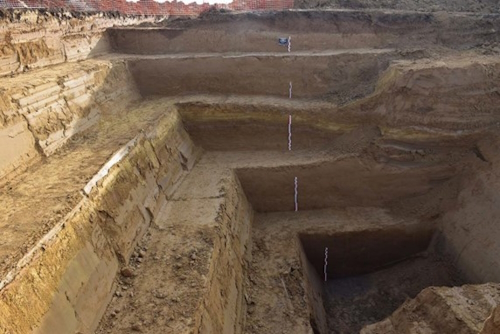
SEMALOESS
Sedimentological and malacological analysis of the loessic sequence of Champagne‐sur‐Oise (Val d'Oise)
Scientific responsibility :
- Olivier Moine
- Pierre Antoine
Methodological axes :
Thematic fields :
Disciplinary sectors :
Partnership :
Funding :
- DIM PAMIR
Project ID : IDF-DIM-PAMIR-2025-11-013
Summary :
The 6‐m‐thick loess sequence of Champagne‐sur‐Oise (95) lies on fluvial deposits of a low terrace of the right bank of the Oise river whose upper loamy‐sandy part has been dated, in a 2015 survey, from the last interglacial period (Eemian) (Alligri et al., 2017, Rapport SDAVO). Compared with ages obtained in the neighbouring reference sequence of Villiers‐Adam (Antoine et al., 2003, Quaternaire), the overlying loess sequence would cover a period from the Weichselian Early Gacial to Upper Pleniglacial (~110 000 to 17 000 years). That type of record, combining a fluvial terrace and a slope cover in a single profile is very rare. It constitutes the only context allowing to tackle the central, and still largely debated, question of the age of the incision in the bedrock responsible of the formation of stepped river terraces compared to that of climatic cycles (Antoine et al., 2024, Boreas). This major geomorphological rupture is materialized on the field by the sudden passage (discordance) of fluvial environments (terrace) to slope deposits (colluvium than eolian deposits), which marks the displacement of the valley and then the incision of the new alluvial plain. The study in continuous and at high resolution (5 cm/sedimentological sample and 10 cm/malacological sample) of the loess sequence of Champagne‐sur‐Oise thus aims to reconstruct the paléoenvironnemental evolution during the first half of the Last Glacial (~110 000 to 40 000 years). Two luminescence datings in progress for the base of the sequence will be completed by radiocarbon datings on eartworm calcite granules for the upper part (≤ 40 000 years). This approach will yield a new referential for environnemental and geomorphological transition phases that mark the period between the end of the Last interglacial and the Last Glacial Maximum.

